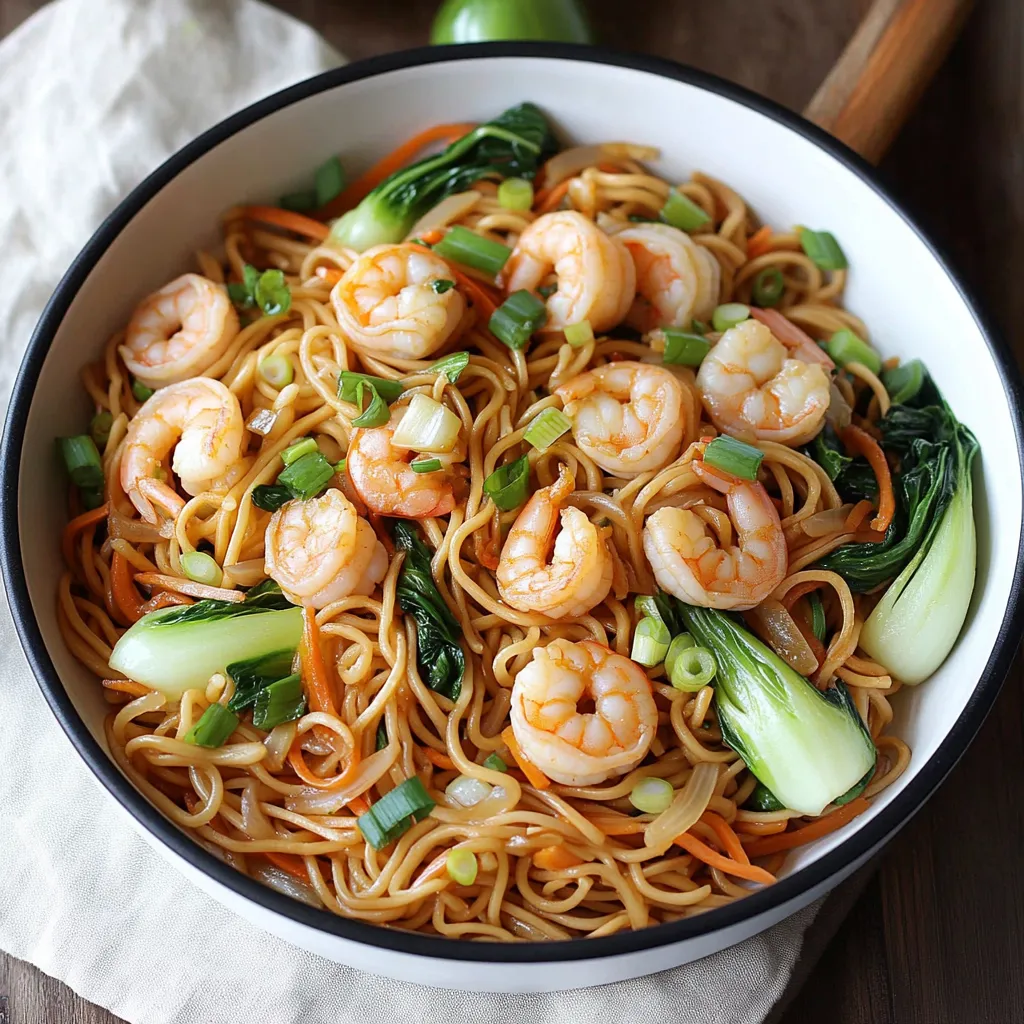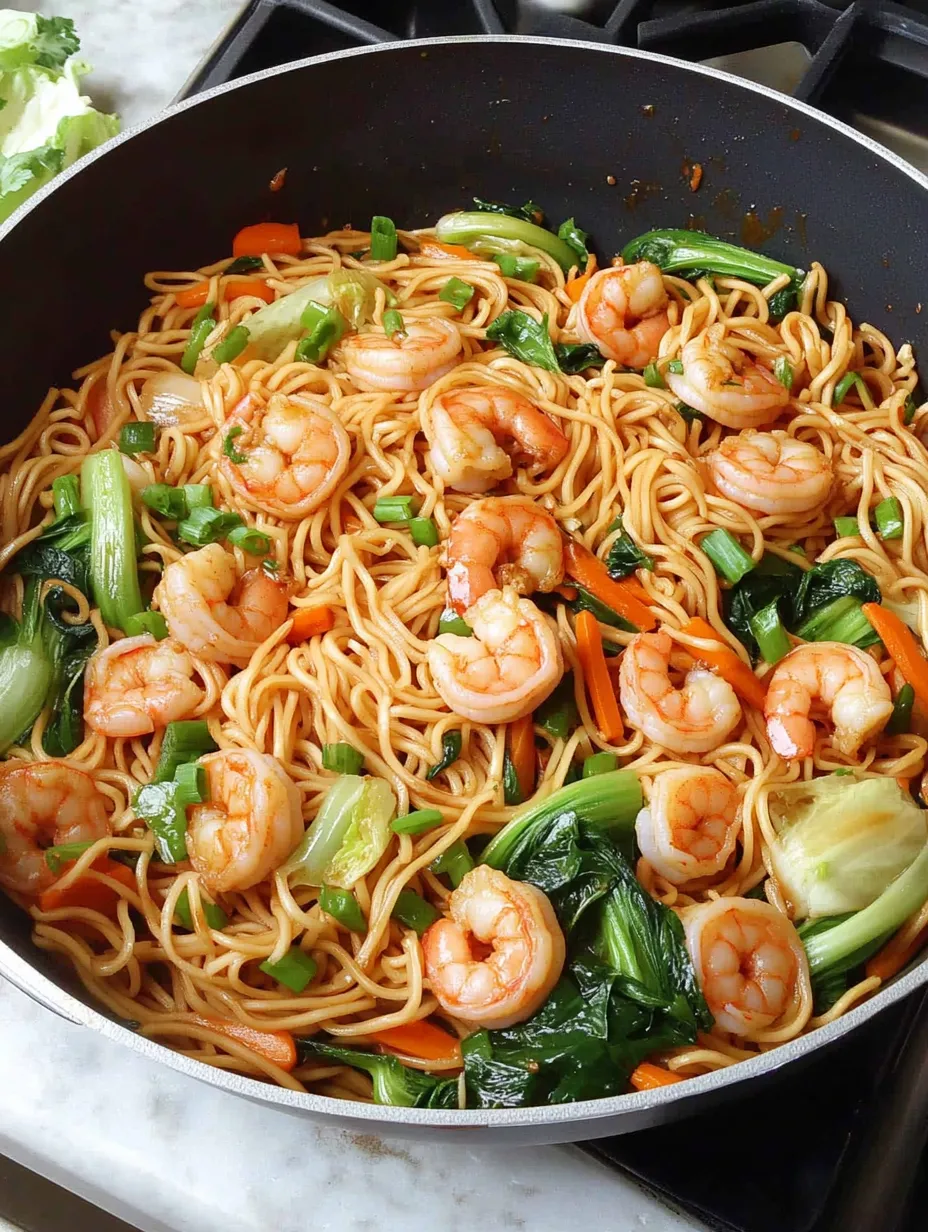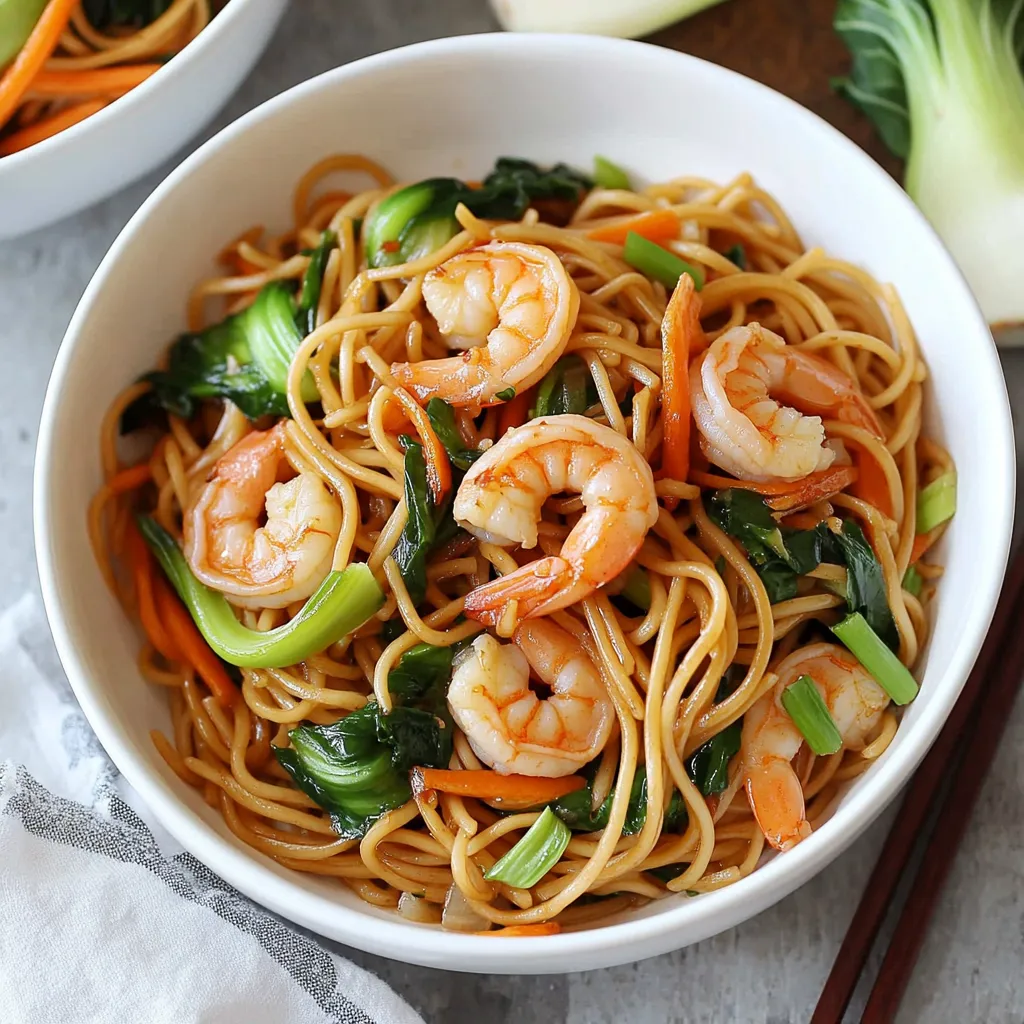 Pin it
Pin it
A homemade Shrimp Lo Mein brings the vibrant flavors of your favorite Chinese restaurant right to your kitchen. This satisfying noodle dish combines succulent shrimp, crisp vegetables, and tender noodles in a savory sauce that captures the perfect balance of authentic Asian flavors.
During my culinary adventures, I discovered that the secret to perfect lo mein lies in the timing of each component. The way the noodles absorb the sauce while maintaining their texture creates that authentic takeout experience we all crave.
Essential Ingredients & Selection Tips
- Shrimp: Look for translucent, firm shrimp without any off-odors
- Lo Mein Noodles: Fresh ones provide the best texture and flavor
- Oyster Sauce: Premium brands offer richer umami flavor
- Bok Choy: Choose crisp stems and bright green leaves
- Garlic: Fresh cloves provide the most vibrant flavor
Detailed Cooking Instructions
- Step 1: Master Your Mise en Place
- Devein shrimp and pat dry thoroughly. Cut vegetables into uniform sizes. Mix sauce ingredients until sugar dissolves. Have everything ready before heating the wok.
- Step 2: Perfect Your Noodles
- Cook just until al dente. Rinse immediately with cold water. Toss with a tiny bit of oil to prevent sticking. Keep them separate until the last minute.
- Step 3: Prepare Your Shrimp
- Season lightly with salt and pepper. Cook quickly over high heat. Remove as soon as they turn pink. Keep warm while preparing vegetables.
- Step 4: Build Your Base
- Caramelize onions slowly for sweetness. Add garlic just until fragrant. Layer vegetables according to cooking time. Maintain high heat throughout.
- Step 5: Create the Final Dish
- Return shrimp to pan. Add noodles in small batches. Toss continuously while adding sauce. Finish with fresh green onions.
 Pin it
Pin it
My most memorable experience with this dish came when teaching my niece to cook. Watching her face light up as the kitchen filled with aromatic flavors reminded me why simple, well-executed dishes bring such joy.
The Sauce Balance
Finding the perfect ratio of soy sauce to oyster sauce creates that elusive umami flavor that makes restaurant lo mein so addictive. Each ingredient plays a crucial role in the final taste.
The Noodle Knowledge
Understanding how noodles absorb sauce helps achieve that perfect texture where they're coated but not soggy.
 Pin it
Pin it
After countless times making this dish, I've learned that success lies in respecting each ingredient's cooking time and letting the flavors build naturally. When everything comes together just right, this homemade version rivals any restaurant version.
Frequently Asked Questions
- → Can I use different vegetables in this recipe?
- Yes! Feel free to add snow peas, bell peppers, mushrooms, or any other veggies you enjoy. Just adjust cooking times based on the vegetables you choose.
- → What can I use instead of Lo Mein noodles?
- Regular spaghetti works great as a substitute. You can also use other Asian-style noodles like chow mein or wheat noodles.
- → Can I make this with chicken instead of shrimp?
- Absolutely! Slice chicken breast into thin strips and cook until no longer pink in the middle, about 5-6 minutes.
- → Is oyster sauce necessary?
- Oyster sauce adds authentic flavor, but you can substitute with extra soy sauce or hoisin sauce if needed. The taste will be slightly different but still delicious.
- → How long do leftovers last?
- Store leftovers in an airtight container in the fridge for up to 3 days. Reheat gently in a pan or microwave, adding a splash of water if needed.
